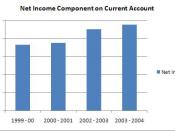General Mills, Inc.
Financial Accounting Case Study
Module 1:
A. General Mills Consolidated Statements of Earnings:
1. The recorded sale amount of almost $8 billion is not the actual amount of cash collected. The amount of $8 billion includes cash and credit sales.
2. Sales increased each year from 2000 to 2002. The difference between the year 2000 and 2001 was a 5.35% increase (5,450-5,173/5,173 = .0535). The difference between the year 2001 and 2002 was a 45.85% increase (7,949-5,450/5,450 = .4585).
3. The largest expense for General Mills for the years 2000, 2001, and 2002 was the same; over 50% of the revenue each year went towards the cost of sales. Sales in 2002 were the largest, about 7% more than the two previous years.
2000: (2,698/5,173) = .522 = 52.2%
2001: (2,841/5,450 = .521 = 52.1%
2002: (4,767/7,949) = .599 = 59.9%
4. Net Income:
2000: $614 million
2001: $665 million
2002: $458 million
When comparing the net income figures for the past three years, it is seen that between 2000 and 2001, the net income increased by $51 million, but between 2001 and 2002, the net income decreased by $207 million.
5. A company's stock price is usually influenced by the amount of net income because when finding the price of the stock, you must divide the number of stocks by the net income. So, the higher the net income, the lower the price of stocks, which is what buyers look for (means better profit).
6. Even though General Mills paid dividends in 2000, 2001 and 2002, the corresponding total dividend payments did not appear as an expense on the income statement because dividends are not an expense; they are a financing activity that is reported on the statement of stockholder's equity. They are payments that are...


